By Matteo Metta and Oliver Moore
While the co-legislators and the trilogue negotiations at EU level continue to derail the future CAP away from the necessary reforms, in December 2020, the European Commission issued EU-wide and 27 country-specific Staff Working Documents providing recommendations directed to the Member States in charge of designing the future National CAP Strategic Plans.
With the Member States speeding up their preparatory activities, will these recommendations really steer and align the plans towards the European Green Deal objectives and targets? This article analyses these recommendations and reflects on how the Commission will check their incorporation to approve the submitted CAP Strategic Plans.
1. Commission’s recommendations: glittering or gold?
Just before the end of 2020, the European Commission published EU-wide[1] and 27 country-specific recommendations[2] directed to the national authorities. The 27 Staff Working Documents contain an in-depth analysis of the challenges faced by agriculture, forestry and rural areas in the Member States, as well as a list of non-binding recommendations to design ambitious CAP Strategic Plans in line with the Green Deal objectives.
Good on outlining the problems, poor on outlining effective solutions – that is the core takeaway from this set of documents. The analyses provided in these documents shows small scale farmers and the environment are under enormous pressure. However, the list of recommendations to the Member States is often weak, with quite ambiguous suggestions or gaping gaps. Precision farming, however loosely defined, is somehow a catch-all cure, while promising initiatives providing multiple public goods, such as social farming, continue to be excluded or never mentioned.
With these recommendations, the Commission framed the CAP Strategic Plans within the Green Deal objectives, which is a laudable strategy, consistent with what was outlined in the Commission Staff Working Document published in May 2020 (link), and despite much resistance from the Member States to incorporate the targets.
However, the recommendations do not lead to precise commitments for the designing of intervention strategies. In the main, these recommendations just repeat the list of interventions available in the CAP Strategic Plan Regulation (i.e. ‘what the CAP menu offers’), without taking any significant critical stands on key problems, or proposing necessary changes to incorporate within each intervention (e.g. what is expected from each intervention in terms of ‘red lines’, ‘how’, ‘to what extent’, ‘when’, ‘target’ to overcome the problems).
These recommendations were initially written by the Commission services and discussed bilaterally with the national governments before their publication. In the writing (and polishing) process, almost all national governments kept the draft version internal, without allowing any possibility for a public scrutiny. We have no idea if in fact the Commission tried to any extent to make recommendations more robust. After some back and forward exchanges with the agri-ministers, the good news is that these recommendations were made publicly available and can be discussed among national and regional parliaments, authorities, scientists, and civil society organisations.
Contrary to the strong opposition expressed right after the publication of the European Green Deal’s strategies, it was surprising to see agri-ministers welcoming or paying little heed to these recommendations. In Spain, the agricultural minister officially stated here[3] that 16 of the 17 recommendations given by the Commission were fully in line with the needs identified by the Spanish Government for the future CAP Strategic Plans. In France, most of the analysis accompanying the Commission’s recommendations has been based on the French diagnosis analysis underpinning the SWOT analyses of the CAP Strategic Plan. Other Member States have published no official positions.
The overall impression from a cross-comparison among the recommendations is that the Commission has made considerable efforts to make it as easy as possible for the Member States to incorporate them. Considering that the incorporation of these recommendations is going to become one of the criteria to approve the plans, can this reaction be seen as a sign of regained ‘trust’ from the Member States on the Commission’s role in steering, approving or rejecting the CAP Strategic Plans in line with the Green Deal objectives? Or should there be concerns about these recommendations, which may smooth the approval process from the Commission?
Fundamentally, it will be very difficult for civil society organisations to objectively follow up and monitor the level of incorporation of these recommendations during the Commission’s approval process – especially if Member States see them as ‘non-binding’.
Download the entire article as a PDF
2. The gold
Some recommendations are worth pointing out from these documents:
- Annexes I and II. These are included in a separate document[4] accompanying the EU-wide recommendation to all the Member States. Annexes I and II report tables which show the baseline data (or the lack thereof) for measuring the distance to and setting the value of Green Deal’s targets at national level. Whenever possible, these national values should be broken down at regional level, if they want to be more sensitive and useful for strategic planning.
- Green Deal target on the reduction of greenhouse gas emissions. For the first time, DG AGRI referenced this quantitative target in its communication, which should be integrated and monitored in the CAP Strategic Plans. This target was not included in the analysis published by the Commission in May 2020 about the link between the CAP and the European Green Deal[5].
- The partnership principle. Member States will be monitored by the Commission during the preparation of the CAP Strategic Plans. In the approval process, the Commission will consider how the Managing Authorities are working in a transparent and effective manner with civil society organisations, regional and local authorities, and scientists. We hope that this monitoring considers the years 2018, 2019, and 2020 were the level of transparency and quality of consultations for the preparation was generally poor across the Member States.
- Intensive agriculture is a problem. This was stressed in many analyses conducted across the Member States. An impressive body of data and scientific references on the negative socio-economic and environmental implications of intensive livestock, pesticide and fertiliser use, ploughing of permanent grasslands, farming on wetlands and peatlands, and more, were presented.
- Sustainable farming is a solution. Considering their multifunctional role in our society and planet, the Commission acknowledged that small scale farmers of any age and gender are disappearing, leaving food provisioning, land management, and landscape completely abandoned and in the hands of corporate farming and food industry interests.
- This CAP is broken. Direct payments are concentrated in the hands of a few farmers. The agri-environmental conditionalities are too weak to justify public investments for intensive farming. And many more considerations were stressed both in the EU-wide, as well as in the 27 country-specific recommendations. For instance, the Commission suggested the Netherlands “redirect income support towards farmers who perform practices that are beneficial for the environment and climate and reward them accordingly for providing public goods.”
- Integrating the Green Deal objectives is paramount for approving the CAP Strategic plans, and the Member States are requested to set explicit national target values contributing the different Green Deal objectives. Hopefully, these national target values will be substantiated and broken down with regional values.
Each Staff Working Document (SWD) sent by the Commission to the single Member States needs its own assessment, also considering the quality of the documents (SWOTs, draft intervention strategies), consultation processes, and state of preparation in the Member States. For instance, in the case of Poland, the draft CAP Strategic Plan[6] shared with NGOs for consultation is exceptionally complex, and main messages are difficult to read and communicate to the farmer and rural communities.
Overall, the Commission’s Staff Working Documents can set a good basis for the next preparatory months. Although the recommendations remain on a general level, the 27-country specific documents better organise the data, clarifies problems in agriculture, and indicates thematic areas that require more work and finding better solutions. For this reason, they are useful for the operative side of the consultations of the CAP Strategic Plan.
Moreover, these documents clarify that the Green Deal and its strategies are not just a long-term vision that concerns only the EU Institutions, but should concern especially the Member States and the CAP Strategic Plans.
3. The glittering
It is certainly the case that a wealth of accurate analyses and critical facts are presented by the Commission in these documents, and the efforts to cooperate with the Member States and make available official documents are to be appreciated.
However, there are several concerns and questions stemming from the chapter containing ‘recommendations’. The next sections aim to shed light on what are the major weaknesses of the Commission’s recommendations and what civil society organisations need to pay attention to, to ensure the quality of CAP Strategic Plans is enhanced by these recommendations, and not reduced to an easy tick boxing exercise.
3.1 Recommendations & much more to approve the CAP Strategic Plans
The Commission has pledged to publicly share appropriate documents on how it envisages to assess and approve the CAP Strategic Plans[7]. However, there is no information, nor deadline on the final deliverable and process so far.
The publication of checklists or tools to approve the plans might not be necessarily timely or effectively synchronised with the Member States’ timeline and preparatory activities. The last section of this article provides more information on the state of play across the Member States, but there are certainly doubts on how the Commission is effectively supporting the preparation and approval of the Plans.
As remarked by the Commission, the incorporation of these recommendations shall be considered together with other criteria, like the ones set up in Article 106 (Approval of the CAP Strategic Plans), which includes also Article 92 (No backsliding principle), Article 94 (Procedural Requirements), and much more consistent analyses across the submitted plans.
Very important is also Article 125(4) on the strategic environmental assessment and the ex-ante evaluation of the CAP Strategic Plans. Although the co-legislators are doing their utmost to avoid any mandatory integration, the efforts expressed in the national values towards the Green Deal targets should also be part of the approval.
It is important that the Commission anticipates the possible impact of the CAP Strategic Plans on the functioning of the internal market and distortion of competition, considering that many rules of the Common Market Organisation will be shifted from the EU to the national level.
3.2 Ticking boxes or holding Member States close to the evidence?
Producer Organisations
In the case of Italy, the Commission recommends “strengthening and developing producer organisations and cooperatives, particularly in regions and sectors where they are less present”. What does it mean in practice? Producer organisations are already supported in Italy and certainly will continue to be aided in future. Producer organisations are an excellent tool to channel money from Brussels to support agricultural trade. Therefore, Italy will easily deal with this recommendation, but it is too vague to mean anything.
So, the point is not that Italy needs to introduce producer organisations – this is already the case. Rather, more precise reforms of producer organisations could have been recommended to improve the targeting and delivery of public goods. For instance, which form of organisations should Italy particularly avoid or address to ensure that CAP sectoral interventions strengthen sustainable food networks and the position of the farmers along the supply chain, instead of enriching intermediators who are paid with public money to aggregate large volumes of agricultural production for international export?
The Commission could have recommended Italy consider setting up a lower threshold of maximum support for producer organisations. This would help develop agricultural cooperatives across the regions, as well as prioritising support towards those that support local ‘heirloom’ varieties of cultural and biodiversity value, organic food provision and consumption, and more.
Organic Farming
When recommendations are ambiguous or too generic, it is hard to expect a meaningful appraisal and objective follow up actions. This can be seen in the below recommendation given to Italy on the CAP environmental objective.
The Italian CAP Strategic Plan will include support for conversion and maintenance schemes for organic farming – but this was the case with or without a recommendation from the Commission. More meaningful recommendations were expected from the Commission, for instance in relation to allocating higher R&D budgets, reviewing public procurement laws, increasing payments per ha for organic farming, reducing disparities across regions and sectors, or improving the administrative procedures for organic farming according the EU regulation 834/2007 or any other participatory guarantee systems.
By reading the above recommendation on organic farming, the easiest way for the Commission to check if it will be incorporated in the Italian CAP Strategic Plan could be as follows (Table 1):

Starting from this simple fictitious example, it is possible to start to think with more precision about what else is needed for a substantial appraisal from the Commission, rather than a box-ticking exercise.
Firstly, the statistics on organic farming in Italy must be seen at regional level, not only national. As displayed below, there are disparities across the Italian territory in terms of area under organic farming. National and regional efforts are therefore needed. Similarly, other differences across sectors, farm sizes, farmer ages, etc. must be considered too when checking the level of incorporation of this recommendation.
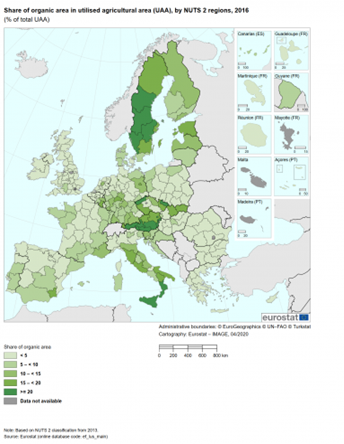
Moreover, instead of patting itself on the back for its actual 15.2% of share of organic farming in total UAA[8], there is certainly room for Italy as country to achieve and go beyond the European target of 25%. After all, this is target for a pan-European average of 25%, so some Member States will have to surpass 25%. And those closest to it have a head start.
Secondly, the Commission recommended Italy support organic farming via agri-environment-climate schemes, but these are only one of the interventions available in the CAP. Certainly the suggestion to envisage bio-districts is laudable and hopefully Italy will put in place collective efforts at territorial level. However, to appraise the overall efforts of the Italian CAP Strategic Plan towards the Green Deal target of increasing the share of agricultural land under organic farming, the Commission could consider more qualitative elements within and outside the CAP plan in Italy and elsewhere. For instance, the following aspects can be checked:
As illustrated in this example, there are many more quantitative and qualitative aspects that we hope the Commission will consider when appraising whether Italy substantially incorporated the recommendations related to organic farming and that the results of this appraisal are made publicly available. We hope that the broad recommendations sent by the Commission are translated and appraised in more details.
3.3 Gaps between strong analyses and weak recommendations
The Commission’s recommendations mainly repeated the list of interventions available in the CAP. However, in some cases, these were too weak and broad compared to the detailed analyses backing them up.
In Ireland, the Commission acknowledged the expanding dairy herd as a major contributor to increasing emissions but suggested better nutrient management plans as the solution. This is weak and non-committal in the face of an acknowledged problem. In Italy, the Commission recognised the high number of environmental challenges that agriculture and farmers face in relation to climate change, soil erosion, water quality, and more. Numerous recommendations were given in this line, but the Commission never suggested the provision of eco-schemes to be included in the Italian CAP Strategic Plan.
The former Italian Minister of Agriculture strongly opposed mandatory ringfencing for eco-schemes; does this explain why this intervention is never mentioned in the list of recommendations? Certainly, it is an incongruous anomaly when other Member States were clearly recommended eco-schemes. What is so specific about Italy to somehow escape without such an obvious recommendation?
3.4 Digitalisation: the panacea to all sustainability problems?
In many recommendations, digitalisation emerges as a systematic solution to all Member States to increase the sustainability of food and farming, as well as for the development of rural and forestry areas. However, there is little to be optimistic about the mainstream political agenda behind digitalisation and precision farming currently pushed by industry, input providers, corporate farmers, and agricultural policies.
If digitalisation efforts in food, agriculture and rural areas continue to push for increasing productivity and efficiency, however poorly defined, instead of, inter alia, breaking down current inequalities in food chains, closing gaps between agriculture and the society, and drastically reducing negative impacts on the environment, viable farming will continue to disappear and corporate capture – including of farming systems – will continue to rise.
3.5 Internet connectivity in rural areas: what is CAP’s role?
Internet connectivity often comes across as the necessary condition to develop and make rural areas more attractive. However, rural areas in Europe still need clarity on the policies that will ensure full broadband coverage and internet connectivity in rural areas. At the moment, the CAP does not seem to be the policy, nor has it established specific interventions leading the achievement of this target beneficial for rural areas and farmers. Outside the CAP, DG AGRI seems inactive and under-committed to aligning the rural development pillar to cohesion policy. This institutional vacuum at EU level on who leads the efforts towards this important Green Deal target will certainly fall at national and regional level too – if no policy is charged with driving a sustainable rural digitalisation, then it will not happen in the required extent and expected time.
The recommendations sent to the French CAP Strategic Plan reflect this dilemma. Compared to the first draft version sent to France, one of the few drafts made available to civil society organisations, the Commission has adjusted its initial recommendation to dedicate CAP budget for increasing the broadband coverage in rural areas. The recommendation now speaks about ‘investing in fast broadband and connectivity in synergy with the other EU funds (ERDF, RRF)’. The amendment might have been requested by the French agri-minister to clarify that the commitment towards this Green Deal target should concern the European Structural and Investments Funds.
With Pillar II of the CAP tightly held by the farmer unions, and the lack of alignment between the CAP and the Cohesion Policy, who will increase the percentage of rural households and business having access to fast internet connection?
4. CAP Strategic Plans: back on track and hurry up
The Commission recommendations will play a role until the final approval of the CAP Strategic Plans. However, in the short-term, they can open numerous internal debates within the Member States that need to be urgently addressed, for instance about the distribution of direct payments (internal convergence, capping, redistribution, historical entitlements, eco-schemes).
There are still many differences and information gaps on the level of preparation across the Member States, but countries like France, Czech Republic, Spain, and Poland are hurrying up and have planned to complete the CAP Strategic Plans by the upcoming summer 2021, or at least a first draft.
Here some brief updates on the designing of CAP Strategic Plans:
- Poland published the first draft[9] of the CAP Strategic Plan (around 1000 pages long) and consulted with stakeholders along January and February 2021.
- France gave some updates on the state of play of the CAP Strategic Plan in mid-January 2021[10]. A draft version might be ready already in late Spring 2021.
- Spain follows a similar schedule[11] as France and aims to submit a first draft to the Commission by the second half of 2021.
- Italy is working on the guidance to carry out the assessment of needs based on the SWOT evidence, but currently is restructuring its national government.
- Germany will conduct an internal workshop on 18-19th February 2021 to consult the bundesländer on the CAP Strategic Plan and discuss the timetable, eco-schemes, etc.
- Czech Republic is organising regular consultation rounds with stakeholders on specific interventions and decisions included in the draft CAP Strategic Plan.
- The Netherlands conducted a big conference[12] on the green architecture in December 2020. In the same month, the Wageningen University has presented 25 opinions and recommendations[13] about CAP Strategic Plan in the Dutch House of Representatives. Main attention is now on the national elections expected in March 2021.
- Ireland consulted with stakeholders on the design of eco-schemes at end of 2020 and does not expect to submit its CAP Strategic Plan before summer.
5. Concluding remarks
The pace of preparing the CAP Strategic Plans seems to have received a strong acceleration after the many hesitations expressed by the Member States in 2020. There are discussions at national level that are quite controversial and might be influenced strongly by political powers and elections, like the ones foreseen in Germany and the Netherlands (e.g. abolishing historical titles or avoiding internal convergence). Other decisions might need more time and technical considerations if they are to be effective, like the list of practices and delivery of eco-schemes in Pillar I or result-based agri-environment-management schemes in Pillar II. Otherwise, this CAP might present again the same business-as-usual interventions with a new look.
In one year or so, we will see if the Member States will have incorporated the recommendations of the Commission, although our analysis has illustrated that these are too generic to expect some specific commitments and an objective monitoring of the follow up action. One of the benefits of these recommendations might come from the political use. In Spain, the recommendations have been used by the Spanish government to overcome the resistance and protests of some farmers in Andalusia who will be affected by a fairer redistribution of payments, report politico.eu in this article[14]. In countries that are currently experiencing a general anti-European Union perception, the Commission’s recommendations might be less effective to overcome resistance and bring about the necessary changes.
Nevertheless, Member States have the opportunity to engage with civil society, small scale farmers, regional and environmental authorities, and scientists at national or sub-national level, some or all of whom have more robust demands. For instance, in the Netherlands, Wagening University and Research has published 25 detailed recommendations for a greener agricultural policy13, which advise the future Dutch Agricultural Government to:
- Make the requirements for farm income support sufficiently ambitious.
- Compensate for rising water levels in peatlands and nitrogen measures around Natura 2000 areas via the CAP.
- Where possible, opt for measures that are easily verifiable by, for example, satellites.
- Where possible, use evidence-based data about the effectiveness of measures.
- Use target effectiveness as the primary criterion for the selection of eligible actions.
In the politics of institutional inter-relations, the Commission clearly gave more strident critique in the assessments, while holding back on the recommendations. Member States must pay attention to the reality of these critiques and take the recommendations as broad and general guidance. At the same time, the Commission can start translating these broad recommendations into more meaningful and detailed tools, checklists, and advises for the final approval of ambitious CAP Strategic Plans. Possibly, the Commission services should come on time if they want to steer the processes and outcomes.
Member States will better deliver on the public goods CAP if they take these broad recommendations and do something more specific with them. More specific reforms are expected to make the CAP Strategic Plans fit for the environment and for the resilience of the farming community and rural areas. This can only be achieved by intensifying the preparatory efforts, conducting high-quality consultations, and organising effective thematic working groups with a broad and representative base of experts, farmers, scientists, environmental and regional authorities to design more ambitious intervention strategies at national and regional levels.
[1] Link to the article https://www.politico.eu/article/spain-agriculture-andalusia-right-woos-farmers/
[2] Link to the draft CAP Strategic Plan in Poland: https://www.gov.pl/web/wprpo2020/konsultacje-spoleczne-planu-strategicznego-dla-wpr
[3] Link to the event and presentations https://www.academie-agriculture.fr/actualites/academie/seance/academie/les-nouvelles-strategies-europeennes-green-deal-farm-fork
[4] Link to the official press communication in Spain: https://www.mapa.gob.es/es/prensa/ultimas-noticias/luis-planas-las-recomendaciones-de-la-ce-al-plan-estrat%C3%A9gico-avalan-el-trabajo-realizado-por-el-gobierno-y-las-comunidades-aut%C3%B3nomas/tcm:30-553469#prettyPhoto
[5] Link to the conference and material: https://toekomstglb.nl/verslagen-glb-conferentie-im-in-2-en-3-december-2020/
[6] Link to the document in Dutch, with a summary in EN https://www.wur.nl/en/news-wur/show-day/25-recommendations-for-a-greener-European-agricultural-policy.htm
[7] Data refer to 2019. Source: https://agridata.ec.europa.eu/extensions/DashboardIndicators/OrganicProduction.html?select=EU27_FLAG,1
[8] Page 18 of the CAP Strategic Plans recommendations, COM(2020) 846 final
[9] Link to the draft CAP Strategic Plan in Poland: https://www.gov.pl/web/wprpo2020/konsultacje-spoleczne-planu-strategicznego-dla-wpr
[11] See Table 1 of the Commission SWD(2020) 93 final. Analysis of links between CAP Reform and Green Deal
[12] COM(2020) 846 final and Annexes
[13] Link to the country-specific recommendations: https://ec.europa.eu/info/food-farming-fisheries/key-policies/common-agricultural-policy/cap-strategic-plans_en
[14] Link to the official press communication in Spain: https://www.mapa.gob.es/es/prensa/ultimas-noticias/luis-planas-las-recomendaciones-de-la-ce-al-plan-estrat%C3%A9gico-avalan-el-trabajo-realizado-por-el-gobierno-y-las-comunidades-aut%C3%B3nomas/tcm:30-553469#prettyPhoto
Download this article as a PDF
 This article is produced in cooperation with the
This article is produced in cooperation with the
Heinrich Böll Stiftung European Union.
More on CAP Strategic Plans
German Environment Ministry Proposals For CAP Green Architecture
CAP Performance Monitoring and Evaluation Framework – EP Position
A Rural Proofed CAP post 2020? – Analysis of the European Parliament’s Position
CAP Beyond the EU: The Case of Honduran Banana Supply Chains
CAP | Parliament’s Political Groups Make Moves as Committee System Breaks Down
CAP & the Global South: National Strategic Plans – a Step Backwards?
CAP Strategic Plans on Climate, Environment – Ever Decreasing Circles
European Green Deal | Revving Up For CAP Reform, Or More Hot Air?
Climate and environmentally ambitious CAP Strategic Plans: Based on what exactly?
How Transparent and Inclusive is the Design Process of the National CAP Strategic Plans?





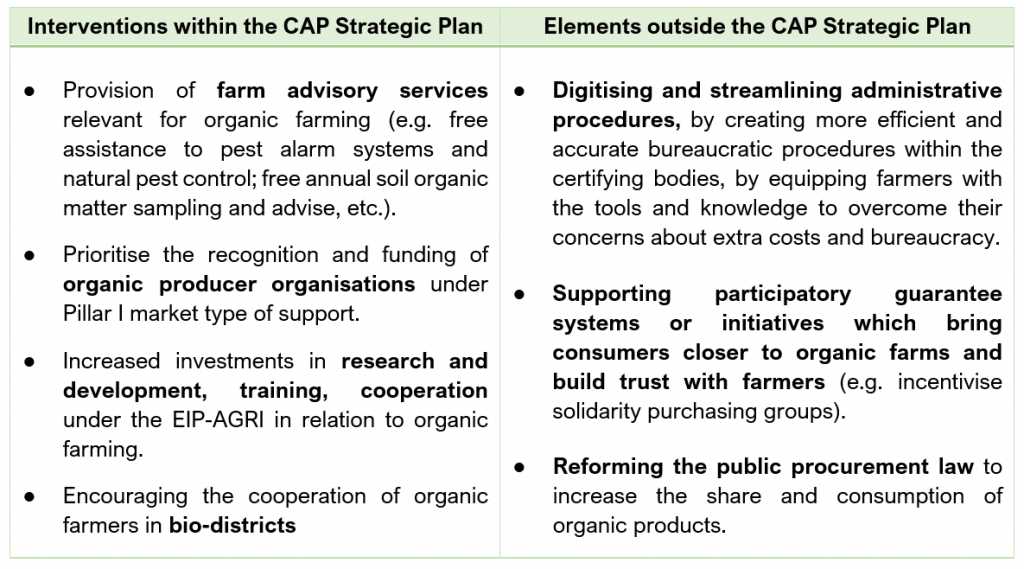
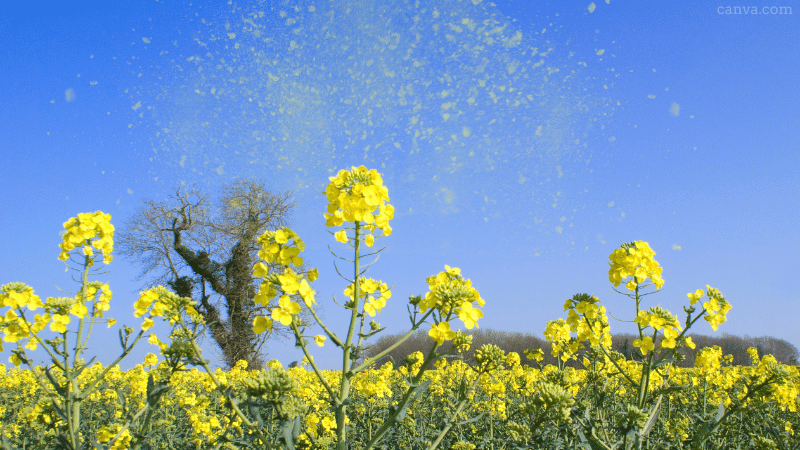



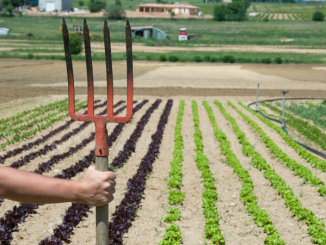
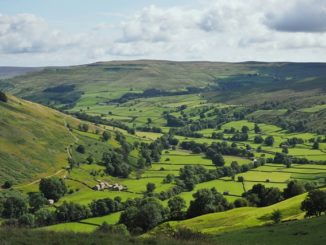
1 Trackback / Pingback
Comments are closed.